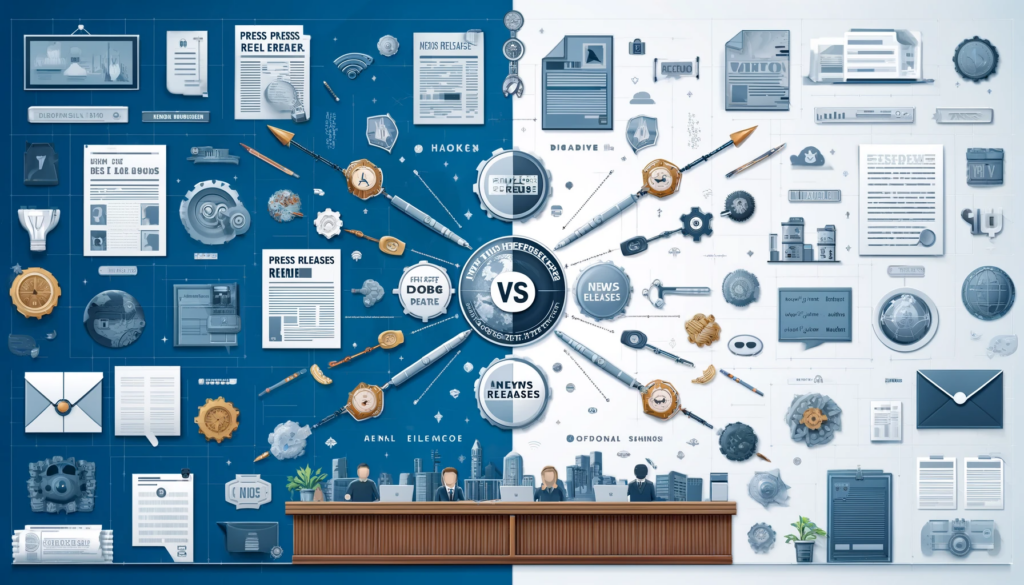Have you ever wondered what the difference is between a press release and a news release? While they might seem similar at first glance, these two communication tools serve distinct purposes and audiences.
A press release is crafted specifically for journalists, focusing on promoting noteworthy achievements with a polished, marketing-driven tone.
Conversely, a news release speaks to a broader audience, including the general public, providing timely and unbiased information about current events. Imagine a press release as a brand’s exclusive story for the media, while a news release is a factual narrative for everyone.
Understanding these differences is crucial for crafting effective communications. The structure, tone, and distribution of your message will vary depending on your goals. Curious to learn more? Dive into this article to discover how you can enhance the impact of both press releases and news releases, ensuring your message reaches the right audience in the most compelling way.
Understanding Press Releases and News Releases
Introduction to Press Releases and News Releases
It’s essential to note that both press releases and news releases serve to communicate important information from an organization, but the difference between a press release and a news release lies in their intent and audience.
Press releases are specifically targeted at journalists, aiming to spark interest and encourage coverage of an event, product, or service. They’re an essential tool for PR professionals and marketers.
On the other hand, news releases, while also targeting journalists, have a broader audience, including the public. They’re typically more straightforward and focus on delivering current or past events or facts.
To summarize, here’s a comparison table:
| Press Release | News Release |
|---|---|
| Targets journalists | Targets broader audience |
| Promotes events, products, services | Reports current or past events, facts |
| Part of PR and marketing strategy | Often more straightforward |
In the press release vs news release debate, it’s about understanding the purpose of each and using them effectively to reach your audience.
What is a Press Release?
Moving on from the basic differences between a press release and a news release, it’s time to get a closer look at what exactly a press release is and why it’s such a powerful tool for businesses. A press release, also known as a media release, is an official statement that companies or organizations issue to news media. It’s primarily used by public relations professionals to share news stories about their clients directly to various media platforms.

The main difference between news and press releases lies in their purpose and distribution. While a press release is designed to promote the company or organization’s news, projects, or events, a news release focuses on providing timely and factual information about current events.
Distributing press releases is a crucial part of a corporate communication strategy. It helps in broadcasting the company’s achievements, product launches, or significant changes within the organization.
This form of online communication is a tried-and-true method for businesses to gain exposure, highlight their work, and reach their target audience efficiently. Hence, understanding and utilizing press releases is vital in the world of public relations and marketing.
What is a News Release?
A news release is a vital tool of public relations, often disseminated via online communication platforms to ensure rapid media coverage.
News releases are typically sent to journalists, editors, and media outlets to inform them of events, product launches, company news, or other significant developments. Here are the key components of a news release:
- Headline: A concise, attention-grabbing title that summarizes the news.
- Dateline: The date and location from where the news is being released.
- Introduction: The opening paragraph that answers the basic questions of who, what, when, where, why, and how.
- Body: Detailed information that provides context, quotes, statistics, and other relevant details to support the news.
- Boilerplate: A brief background about the company or organization, usually found at the end of the release.
- Contact Information: Details of the person or department media can contact for more information.
News releases are crucial tools in public relations as they help shape the narrative, generate media coverage, and inform the public about important updates. They should be clear, concise, and provide all necessary information to facilitate accurate and compelling news stories.
In essence, a news release is a vital tool in the world of public relations, providing the public with timely, factual, and relevant information.
Key Differences Between Press Releases and News Releases

While both press releases and news releases serve to communicate important information, there are key differences you should be aware of.
Below is a comparison table for a better understanding:
| News Release | Press Release |
|---|---|
| Delivers timely information | Announces upcoming events |
| Used for online communication | Used for media coverage |
| Aims to inform the public | Aims for journalistic interest |
| Covers current events | Promotes company news |
| Follows journalistic principles | Emphasizes unique selling points |
Consider aspects like audience targeting, tone and style, content focus, and distribution channels.
Understanding these differences can help you choose the right communication tool for your organization’s needs.
Audience Targeting

In targeting your audience, remember that press releases primarily aim to grab the attention of media professionals and journalists for media coverage, whereas news releases cast a wider net, reaching not only the media but also the general public and stakeholders. This key difference in audience targeting can significantly impact the reach and effectiveness of your communications.
For a press release, your goal is to make the content appealing and contextually relevant for those in the media industry. You’re looking for press coverage, so your focus is on crafting a story that will resonate with journalists, who can then relay it to their audience.
On the other hand, a news release is designed to communicate directly with a broader audience. You’re not only trying to catch the attention of media professionals but also aiming to engage the general public and stakeholders. This means your news release should be easily understandable and relevant to a wider audience demographic.
Understanding these differences is vital for effective audience targeting. Remember, the type of release you choose depends on who you want to reach and how you want your news to be shared.
Tone and Style
As you consider your target audience, another key aspect to keep in mind is the tone and style of your release, which often varies between press and news releases.

A press release typically adopts a more formal style, presenting information in a promotional tone. The aim is to highlight the unique selling points or benefits of a product, service, or event to create interest and encourage media coverage. The tone leans towards persuasive, with a focus on strategically presenting contextually relevant facts to garner attention.
In comparison, a news release takes on a neutral tone, focusing primarily on providing newsworthy information. The style is journalistic, with a clear and straightforward presentation of facts. The goal is to inform, rather than to promote, making the tone objective and unbiased.
In essence, while both types of releases are designed to disseminate information, the key difference lies in their tone and style.
Content Focus

Diving into the heart of their content, press releases and news releases display key differences that cater to specific communication needs. A press release, often used as a press statement, primarily highlights specific achievements or company milestones. It’s a tool to share important news with the media, focusing on the unique selling points or benefits of your organization.
On the other hand, a news release has a broader scope. It covers current events, market trends, and even community involvement. Its goal is to deliver breaking news to the public in a concise, objective manner. In essence, the content focus of a news release is broader, more versatile, and more immediate than a press release.
To illustrate these differences, consider the table below:
| Press Release | News Release | |
|---|---|---|
| Purpose | Announces specific achievements/company milestones | Reports breaking news, market trends |
| Tone | Persuasive, promotional | Objective, straightforward |
| Audience | Primarily media | Media and public |
| Content | Highlights benefits/unique selling points | Covers a wider range of topics |
| Frequency | Often tied to company events | Can be more frequent, tied to news cycle |
Distribution Channels
Now that we’ve unraveled the content differences between press releases and news releases, let’s explore the various distribution channels these releases use to reach their intended audiences.

Press release distribution often involves leveraging PR services that have built relationships with various media outlets. These PR services help ensure your press release reaches journalists and reporters in traditional media who might be interested in your story. It’s a targeted approach, focusing on those who’ve the power to spread your news to a larger audience.
On the other hand, news releases are commonly disseminated through a variety of digital platforms. Company websites are a primary channel, where customers and stakeholders can access the latest news directly. Social media platforms, like Facebook, Twitter, and LinkedIn, are also used to reach a broader audience, given their wide user base and real-time sharing capabilities. Email newsletters serve as another distribution channel for news releases, directly reaching those who’ve expressed interest in your company.
In essence, while both press releases and news releases aim to communicate important information, their distribution channels differ, reflecting their unique audience targets and objectives.
Practical Applications and Examples
Let’s move on to some real-world scenarios of press and news releases.
You’ll see how they’re used in different circumstances and get a sense of their impact.
When to Use a Press Release
You might wonder when precisely a press release becomes your best bet – think of scenarios like launching a new product, celebrating a major company milestone, or hosting a significant event. These are all instances where a press release can prove to be an effective tool for spreading your company’s exciting news.

For instance, when you’re announcing a new product, a press release is your go-to. It’s a direct, formal announcement that offers journalists the necessary information about your product, making it easier for them to cover your story.
Similarly, if your company has reached a significant milestone or is hosting a major event, a press release serves the purpose of each scenario effectively.
When to Use a News Release
Often, a news release becomes the ideal choice when you need to cover a recent event, share timely information, or respond to a trending topic.
Suppose you’re an influencer launching a new line of products. A news release can quickly disseminate the news to the press, ensuring they cover the story promptly. It’s crucial to know your audience, as this can influence your release’s tone, content, and delivery method.
News releases aren’t just about the news; they’re also about generating interest. They’re the foundation of successful media pitches, enticing journalists to delve deeper into your story.
Real-world Case Studies
Have you ever wondered how press releases and news releases work in real life? Let’s look at some practical applications and examples.
Consider a large tech company, launching a new product. They’d typically use a press release, focusing on the product’s unique features to create a buzz. This release, shared with media outlets, can lead to earned media coverage, amplifying the message and impacting business objectives positively.
On the other hand, a municipality announcing roadwork updates would use a news release, focusing on delivering essential information to the public via online platforms. This helps manage public perception and ensures the community stays informed.
However, the lines often blur. A non-profit organization might use a press release to announce a fundraising event, but if it includes detailed information on how donations will be used, it edges towards a news release.
The difference between a press release and news release often depends on the intent, the target audience, and the channel of distribution. Both can be effective tools to communicate with the media and the public, and successful press releases can significantly drive an organization’s objectives.
Crafting Effective Releases
Whether you’re writing a press release or a news release, crafting it effectively is vital.
Let’s explore how to create compelling press releases and engaging news releases.
We’ll also touch upon common blunders to avoid during the process.
How to Write a Compelling Press Release
Crafting a compelling press release requires a spotlight on structure, insightful quotes, and a keen focus on capturing media attention. But how can you achieve this? Let’s delve into a step-by-step guide.
Structure your content wisely. The headline should be catchy, followed by a concise, engaging lead. Provide useful information upfront.
Incorporate quotes. Journalists love them as they provide a human element to the story while adding credibility. Ensure these quotes are insightful and relevant.
Lastly, remember the primary purpose of a press release is to capture media attention. Make it newsworthy, timely, and relevant. Remember, you’re not just writing; you’re selling a story.
Here’s a handy table summarizing the key points:
| Step | Description | Example |
|---|---|---|
| 1 | Structuring the content | Catchy headline, engaging lead |
| 2 | Using quotes | Relevant, insightful quotes |
| 3 | Capturing media attention | Make it newsworthy, timely, and relevant |
Keep these tips in mind when writing your next press release.
How to Write an Engaging News Release
To create a news release that grabs attention and effectively delivers your message, you’ll need to have a clear understanding of your target audience, a knack for storytelling, and a commitment to authenticity.

Begin with a compelling headline, immediately drawing in your readers. Follow this with a concise yet informative summary that encapsulates the core message. Then, delve into the heart of your news.
Here, best practices include sticking to the facts, maintaining a neutral tone, and using quotes to add credibility.
Common Mistakes to Avoid
Ever wondered what pitfalls to sidestep when crafting your press and news releases to maximize their effectiveness? Don’t worry, we’ve got you covered. One common mistake isn’t making your writing contextually relevant. Both your press and news releases should resonate with your target audience’s interests and needs for maximum impact.
Another pitfall to avoid is overloading your releases with jargon or technical language. While it’s important to sound professional, the effectiveness of your release can dwindle if your audience doesn’t understand what you’re saying.
Also, don’t forget the importance of a compelling headline and a powerful lead. These are the first things your audience reads, so they need to hook the reader immediately.
Lastly, remember to proofread your release. Grammatical errors and typos can harm your credibility and distract from your message.
Avoiding these common mistakes in your press and news release writing can greatly increase their impact and effectiveness. So, get writing, and remember to keep it contextually relevant, clear, concise, and error-free!
Conclusion
So, you’ve got the scoop on press releases and news releases. Remember, press releases aim to promote your business, targeting journalists, while news releases deliver objective info to a wider audience. Use press releases for marketing and news releases for sharing important updates.
Now, you’re ready to craft the perfect release, whether it’s to hype your new product or share corporate news. Understanding these nuances can make a world of difference in your communication strategy. Good luck!


